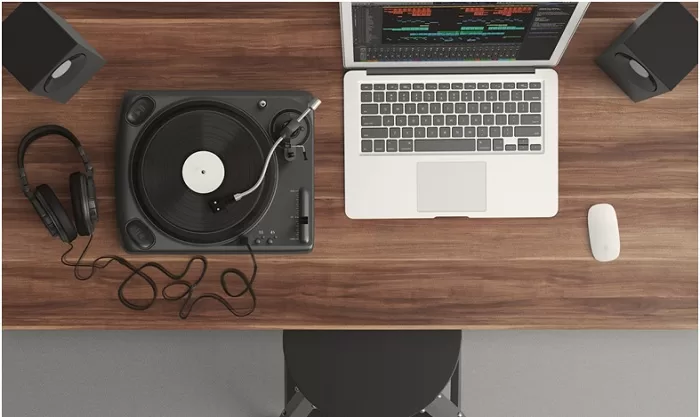Lifestyle
Professional Audio Equipment for Private Use

The pandemic has sparked plenty of creative endeavors when countless people had to isolate and abstain from their usual activities. Copenhagen based audio equipment design company AIAIAI started their online platform #stayhomemakemusic, to inspire aspiring musicians to stay at home safely and use this time to create and share music.
However, recording and mixing songs is not an easy undertaking, and it is usually equipment heavy. If you are looking to join movements like #stayhomemakemusic, you will have to invest into professional audio equipment and setup a home recording studio. Here are the most important components.
What is the Key Gear for a Home Recording Studio?
For the beginning, there are six essential pieces of equipment you can’t go without, excluding instruments. Those are:
- DSP/Audio Interface
- Microphone
- Headphones and/or Boxes
- Acoustic Treatment Items
- Powerful PC/Laptop
- Audio Editing Software
Audio Interface
A DSP (Digital Signal Processor) and an audio interface are often used as terms for the same item, but they can be differentiated. In general, a DSP is used to convert analogue signals into digital data, so it can be processed and edited on a computer. This can be a variety of signals, like sound, video, temperature, or pressure. Meaning, every audio interface uses DSP technology, while some DSPs might not be specialized for audio processing.
The processor is connected to the instrument/microphone via a cable, and to the PC, via USB or similar. It takes the sound signals and turns them into digital data, so we can archive, access, and edit it with audio editing software. Additionally, the audio interface can be programmed or tuned with physical controllers to adjust the audio quality even before the data reaches the computer. A high-quality versatile DSP for audio signals and more, like the miniDSP HD 2X4, costs about $125.
Microphone
The microphone includes the mic itself, its cable, stand and a pop shield. The pop shield is essential when it comes to filtering out unwanted noises in vocal recordings. They cost as little as $10. Similarly, a mic stand and a balanced XLR Cable can be found for under $50.
For the main microphone, choose a cardioid diaphragm condenser microphone. While dynamic microphones are sturdy and can be used without external power, the condenser mic is used for stationary use. It is more fragile, but creates a better sound quality, which makes it perfect for studios.
Additionally, the cardioid feature means that the mic will not record sound from behind, which is suitable for not perfectly soundproofed rooms. While there are some two-digit number condenser mics, it’s better to invest into high quality gear in this area. A good mid-field mic might cost around $300.
Headphones and/or Boxes
Chances are, you already own a good pair of headphones. However, there are some things you can consider when it comes to audio mixing specific gear. Open back headphones, who have som esort of perforation on the outer shell, create a more accurate sound than a closed back headphone. With closed back headphones, the rear enclosure can cause resonances and low-frequency build-up that will affect the sound quality. Their shell makes them better for use in public, while open back headphones are great for mixing. A good semi-professional pair will cost you around $300.
You will pay a similar price for a decent monitor box from high quality speaker brands. While you can mix with headphones alone, a good set of boxes can be helpful. Typically, you use two boxes with the correct placement to get the best sound. Make sure to get proper studio monitors, since regular hi-fi speakers can color the sound. Typically, you will also need to invest into monitor stands to reduce unwanted effects of the boxes’ vibrations.
Powerful PC/Laptop
Most modern PCs will be sufficient for beginners. However, the bigger and more complex the projects, the more power is needed. Typically, Apple computers are said to be more stable and efficient when editing audio. Regardless of the OS, the PC will need a strong CPU and at least 8 GB of ram. Also, make sure it has the right ports for connecting the needed hardware.
Audio Editing Software
Naturally, professional audio editing software (DAW = Digital Audio Workstation) has the highest quality and can be used intuitively and without restrictions or advertisements. If you are just beginning, a free home recording studio software will help you get familiar with the process without any cost.
Which software is right for you can be dependent on your budget, your genre and what exactly you will be using it for, like recording, mixing, or songwriting. Youcanpayanythingbetween $0 to $600 for the appropriate software.
Acoustic Treatment
Finally, acoustic treatment is necessary. It describes all the things you can do to make your recording room sound as neutral as possible. Typical elements are foam and fiberglass panels that are placed on the walls to catch and redistribute the sound in a controlled way.
The size of your room and the type of surfaces (like windows) in it that need sound proofing decide how expensive the treatment will be. If you don’t count the cost for labor and tools, you might spend about $250 on the materials alone.
Conclusion
If you are passionate about creating music, a home recording studio might be the right thing for you. For a basic level, you will need the listed elements.
Good acoustic treatment makes your room soundproof to create neutral sound. Open back headphones and a set of monitor boxes help you to mix the music. A DSP will convert the recorded sound into digital data to lets you manipulate it with your PC and audio editing software. A good cardioid condenser mic will give you the best audio quality for your recordings.
All in all, a full good quality beginner studio will cost you about $1.000 to $1.500, depending on the room and preexisting equipment.


















































